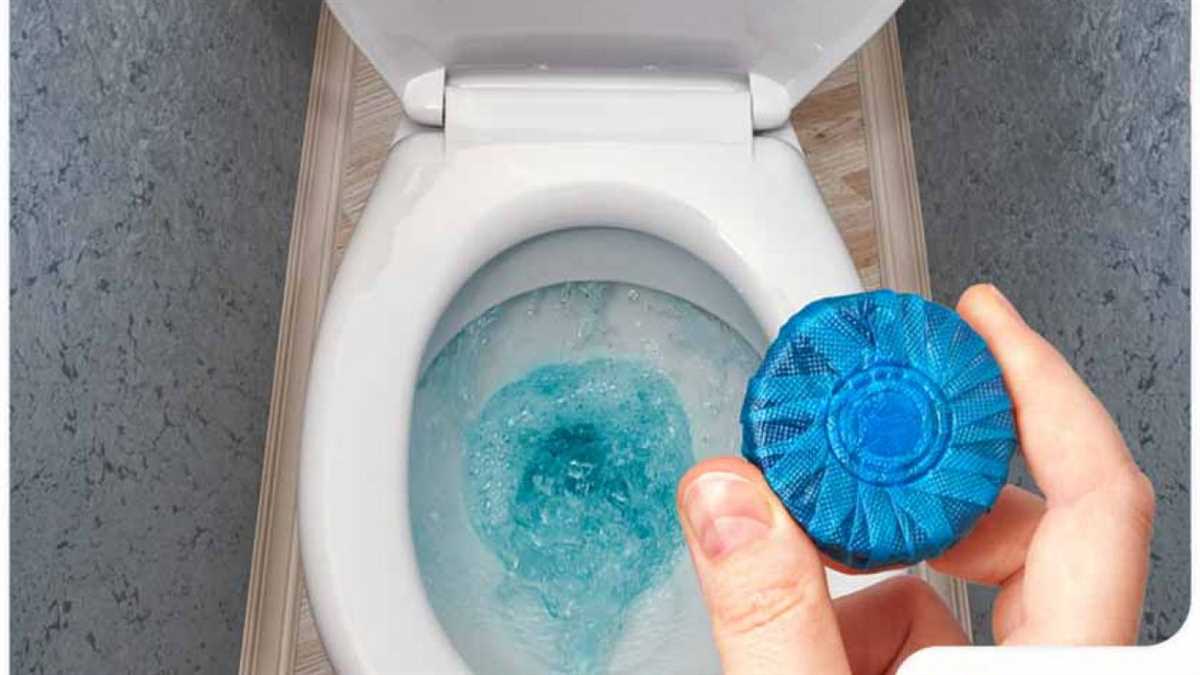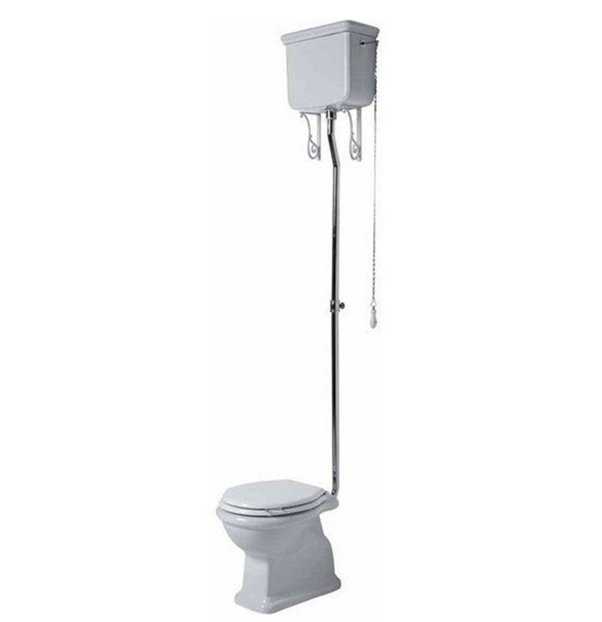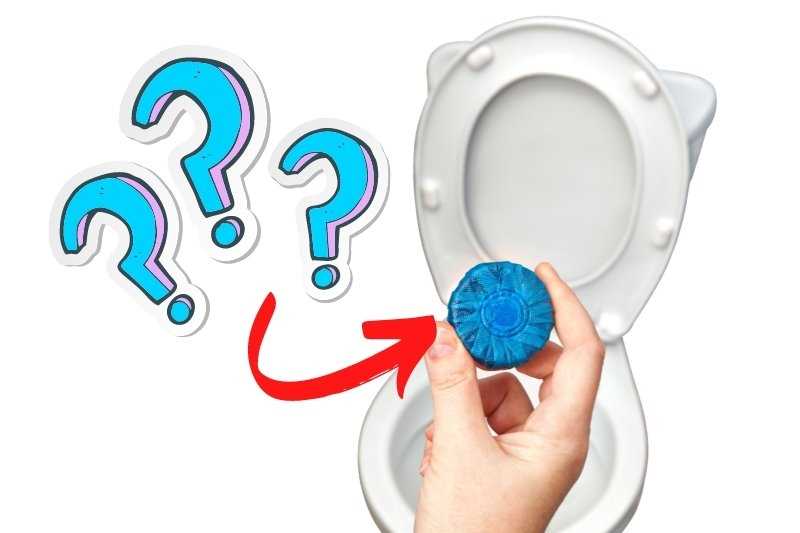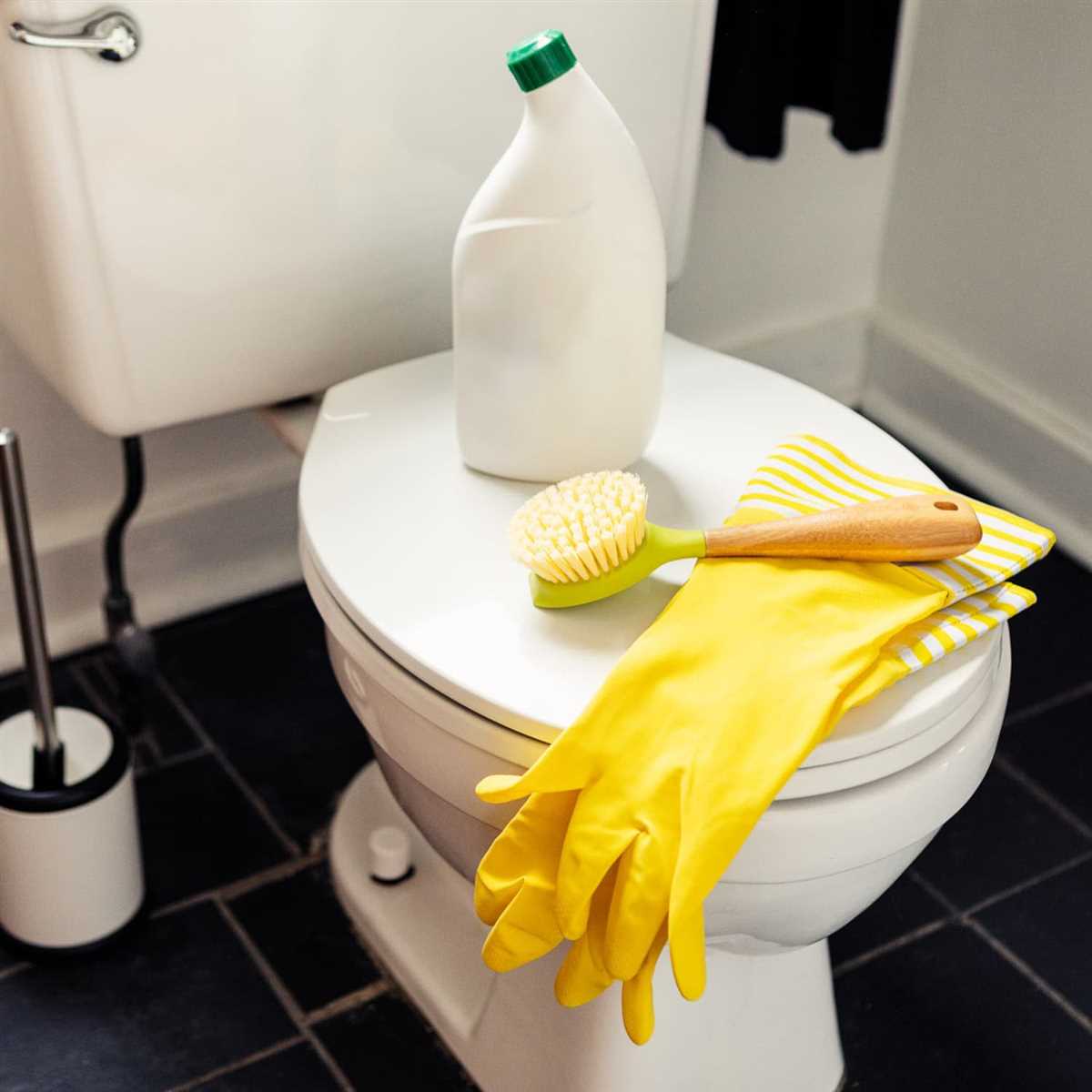




When it comes to keeping our toilets clean and fresh, many of us rely on cistern blocks. These small tablets are designed to be placed in the toilet cistern, where they dissolve slowly, releasing cleaning agents into the water with each flush. However, there is some debate about whether or not cistern blocks can actually cause harm to our toilets over time.
One of the main concerns with cistern blocks is that they may contain harsh chemicals that can corrode the inner mechanisms of the toilet, such as the flush valve or the fill valve. This could lead to leaks or other malfunctions, potentially causing expensive repairs. Some experts argue that using cistern blocks regularly can accelerate the wear and tear on these delicate components.
Another issue is the buildup of chemical residue that can occur inside the toilet bowl. The constant exposure to cleaning agents from the cistern block can lead to the formation of tough stains, especially in hard water areas. These stains can be difficult to remove and may require more aggressive cleaning methods, which could also contribute to the deterioration of the toilet’s finish over time.
It is important to note that not all cistern blocks are created equal. Some manufacturers offer products that are specifically formulated to be safe for toilets, using milder cleaning agents or even natural ingredients. These products may be a better option for those concerned about the potential damage caused by traditional cistern blocks.
Ultimately, the decision to use cistern blocks in your toilet comes down to personal preference and weighing the potential risks against the convenience they offer. If you do choose to use cistern blocks, it’s a good idea to read the product labels carefully and look for ones that are certified as safe for toilets. It’s also important to regularly inspect your toilet for any signs of damage or leaks, and to address any issues promptly to avoid further damage.
The Truth About Cistern Blocks

Cistern blocks have become a popular option for keeping toilets clean and fresh. However, there is much debate surrounding their potential harm to toilets. In this article, we will explore the facts about cistern blocks and whether they are truly harmful or not.
What are Cistern Blocks?
Cistern blocks are small tablets or blocks that are placed in the toilet cistern. They are designed to dissolve slowly over time, releasing chemicals and cleaning agents that help to prevent the build-up of limescale, stains, and odours in the toilet bowl.
Potential Harm to Toilets
Contrary to popular belief, cistern blocks are generally not harmful to toilets when used properly. However, there are a few factors to consider:
- Chemical Composition: Some cistern blocks contain harsh chemicals that may damage certain parts of the toilet, such as rubber seals or plastic components. It’s important to choose a cistern block that is compatible with your toilet and read the product instructions carefully.
- Overuse: Using too many cistern blocks or leaving them in the cistern for an extended period can lead to an excessive build-up of chemicals, which may eventually damage the toilet. It is recommended to follow the manufacturer’s guidelines and replace the cistern block regularly.
Benefits of Cistern Blocks
Cistern blocks offer several benefits when used correctly:
- Cleanliness: Cistern blocks help to keep toilets clean and fresh by preventing limescale, stains, and odours.
- Convenience: Once a cistern block is placed in the cistern, it will continuously release cleaning agents, reducing the need for manual cleaning.
- Cost-effective: Using cistern blocks can be more cost-effective than purchasing separate cleaning products for the toilet.
Conclusion
While there are some considerations to keep in mind, cistern blocks are generally safe and effective for keeping toilets clean and fresh. Just be sure to choose a compatible product, follow the manufacturer’s instructions, and avoid overuse. By using cistern blocks responsibly, you can enjoy the benefits they offer without causing harm to your toilet.
Impact on Toilet Performance

Cistern blocks, also known as toilet tank tablets or toilet tank blocks, can have an impact on the performance of a toilet. While they are designed to make cleaning and deodorizing easier, they can also cause some problems if not used properly.
1. Decreased Flushing Power
One of the main issues with cistern blocks is that they can reduce the flushing power of a toilet. This is because the chemicals in the blocks can build up over time and create a residue in the toilet tank. This residue can then affect the flow of water during flushing, resulting in a weaker flush.
2. Toilet Bowl Stains
Another common problem with cistern blocks is that they can cause stains in the toilet bowl. The chemicals in the blocks can react with minerals in the water, leading to the formation of hard water stains. These stains can be difficult to remove and can make the toilet bowl look dirty, even if it is regularly cleaned.
3. Potential Damage to Toilet Components
In some cases, cistern blocks can also cause damage to the toilet components. The chemicals in the blocks can corrode or deteriorate rubber and plastic parts, such as the flapper valve or the fill valve. This can lead to leaks and other issues that may require costly repairs.
4. Colored Water
Many cistern blocks come in different colors, which can be appealing to some users. However, these blocks can cause discolored water in the toilet bowl. The colored water may be unappealing to some users, and it may take extra cleaning to remove the stains caused by the colored water.
5. Environmental Impact
Another factor to consider is the environmental impact of cistern blocks. Most blocks contain chemicals that are not eco-friendly and can be harmful to aquatic life if they enter water systems. Flushing these blocks down the toilet can contribute to water pollution.
In conclusion, while cistern blocks can make cleaning and deodorizing toilets easier, they can also have negative effects on toilet performance. It is important to use them sparingly and properly to avoid any potential problems. Consider alternative methods of cleaning and deodorizing your toilet, such as using a non-toxic cleaner or natural remedies, to minimize the impact on toilet performance and the environment.
Potential Damage to Toilet Components
Cistern blocks are often made from chemicals that can be corrosive to certain materials found in toilets. Here are the potential damages they can cause:
1. Toilet Bowl
Some cistern blocks contain chemicals that can react with the porcelain surface of the toilet bowl. This can lead to discoloration, staining, and even irreversible damage to the bowl. Over time, the chemicals in the block can eat away at the protective coating on the porcelain, making it more susceptible to scratches and other forms of damage.
2. Toilet Flapper

The flapper is a rubber component that controls the water release from the cistern to the toilet bowl. Certain chemicals in cistern blocks can cause the flapper to deteriorate or become brittle. This can result in leaks and water wastage, as the flapper may not be able to form a proper seal and prevent water from continuously flowing into the bowl.
3. Flush Valve
The flush valve is responsible for releasing the water from the cistern into the toilet bowl during a flush. Continuous exposure to the chemicals in cistern blocks can cause the flush valve to corrode or malfunction. This can lead to problems such as incomplete or weak flushes, water leaks, and reduced flushing efficiency.
4. Toilet Gaskets and Seals
The rubber gaskets and seals in a toilet are crucial for preventing leaks and maintaining a watertight seal. Harsh chemicals in cistern blocks can degrade these rubber components over time, causing leaks and compromising the toilet’s overall performance. Regular exposure to these chemicals can also cause the gaskets and seals to lose their elasticity and effectiveness.
5. Toilet Pipes and Plumbing
If cistern blocks are not dissolved completely and get stuck inside the toilet pipes, they can create blockages and reduce the flow of water. This can result in clogged pipes, increased pressure on the plumbing system, and potential leaks. In some cases, the blockages may require professional assistance to remove, leading to additional costs and inconvenience.
It’s worth noting that not all cistern blocks are harmful to toilets, as there are many eco-friendly and biodegradable options available. However, it’s important to read and follow the instructions provided by the manufacturer to minimize any potential damage to toilet components.
Effects on Water Quality
Cistern blocks can have some effects on water quality, which can be both positive and negative. Here are some of the main effects:
1. Disinfection
Cistern blocks often contain disinfectants such as chlorine or other chemicals that help kill bacteria and disinfect the water in the toilet cistern. This can help prevent the growth of harmful bacteria and reduce the risk of contamination.
2. Odor Control
Many cistern blocks also contain deodorizers that help control odors in the toilet. These deodorizers can mask unpleasant smells and leave a fresh scent in the air.
3. Chemical Residue
However, the use of cistern blocks can also introduce chemicals into the water that may leave a residue. This residue can sometimes affect the taste and smell of the water. It is important to note that the concentration of these chemicals is usually low and within safe limits for human consumption.
4. Environmental Impact

The chemicals used in cistern blocks can have an environmental impact once the water is flushed out from the toilet. These chemicals may enter the wastewater system and eventually find their way into rivers and other bodies of water. The long-term effects of these chemicals on the environment are still being studied.
In conclusion, while cistern blocks can have some positive effects on water quality by disinfecting and controlling odor, there are also potential negative effects such as chemical residue and environmental impact. It is important to use cistern blocks responsibly and consider alternative options if water quality is a concern.
Environmentally Friendly Alternatives
While cistern blocks may be convenient for maintaining a clean and fresh-smelling toilet bowl, they can have harmful effects on the environment and your plumbing system. Fortunately, there are several environmentally friendly alternatives available that can achieve the same results without causing any damage.
1. Natural Cleaning Agents
A great alternative to cistern blocks is the use of natural cleaning agents. These agents are made from biodegradable ingredients and do not contain any harmful chemicals. They can be used to clean and deodorize your toilet bowl without causing any harm to the environment.
2. DIY Toilet Cleaning Solutions
You can also opt for DIY toilet cleaning solutions using simple household ingredients. Vinegar, baking soda, and lemon juice are excellent alternatives that can effectively clean and deodorize your toilet bowl. These ingredients are non-toxic and safe to use.
3. Toilet Tablets
Toilet tablets are another environmentally friendly option. These tablets are usually made from natural ingredients and are designed to slowly dissolve in your toilet tank, providing continuous cleaning and freshening. They are convenient and easy to use, while also being safe for the environment.
4. Eco-Friendly Flushable Wipes

Eco-friendly flushable wipes are a great alternative to cistern blocks. These wipes are made from biodegradable materials and can be safely flushed down the toilet. They are effective in cleaning and freshening your toilet bowl, without causing any harm to the environment.
5. Toilet Tank Dyes
Toilet tank dyes are a natural and safe way to keep your toilet bowl clean and fresh. These dyes are non-toxic and can be used to detect leaks in your toilet tank. They are also environmentally friendly as they do not contain any harmful chemicals.
Conclusion
Overall, there are several environmentally friendly alternatives to cistern blocks that can help you maintain a clean and fresh-smelling toilet bowl without causing any harm. By choosing these alternatives, you can contribute to a healthier and more sustainable environment.
FAQ
Are cistern blocks safe to use in toilets?
Yes, cistern blocks are generally safe to use in toilets. However, it is important to choose a high-quality product that is specifically designed for use in toilets.
Can cistern blocks damage the flushing mechanism of a toilet?
When used correctly and with a high-quality product, cistern blocks should not damage the flushing mechanism of a toilet. However, if a low-quality or improperly installed block is used, it could potentially cause problems.
Do cistern blocks affect the cleanliness of the toilet bowl?
Cistern blocks can help to keep the toilet bowl clean by releasing cleaning agents or deodorizers into the water with each flush. However, the effectiveness of this will depend on the specific product used.
Are cistern blocks harmful to the environment?
Many cistern blocks contain chemicals that can be harmful to the environment, especially if they are not disposed of properly. It is important to choose eco-friendly options and to follow the manufacturer’s guidelines for disposal.
Are there any alternatives to cistern blocks for keeping toilets clean?
Yes, there are alternatives to cistern blocks for keeping toilets clean. Some people choose to use toilet bowl cleaners or disinfectant tablets that can be placed directly in the toilet bowl. Regular cleaning and maintenance of the toilet is also important.
Can cistern blocks cause toilet stains?
In some cases, cistern blocks that contain dyes or other coloring agents can cause stains in the toilet bowl. It is important to choose a block that is specifically designed to be non-staining.













